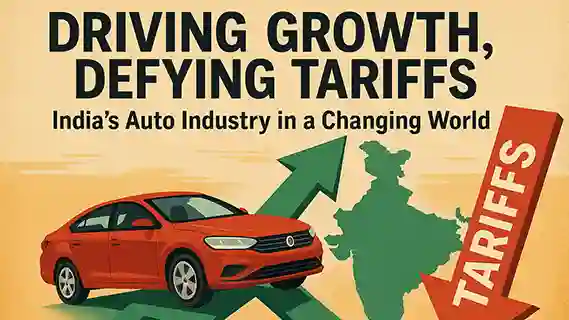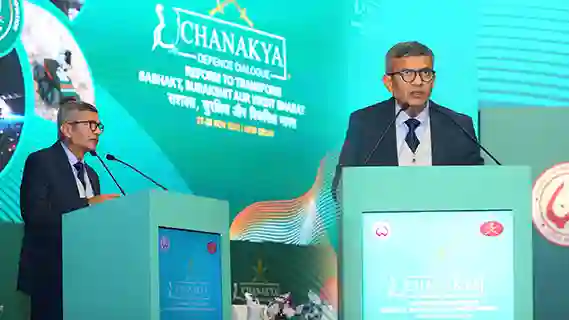Indian Automobile Industry: From Origins to Global Hub
The journey of the Indian automobile industry began in the 1940s with pioneers like Hindustan Motors and Premier Automobiles. In the early years, growth was slow as vehicles were beyond the reach of most consumers. The turning point came in the 1980s when Maruti introduced the Maruti 800 at an affordable price, sparking broader acceptance.
The real transformation unfolded after the economic liberalization of the 1990s, which opened doors to global players and advanced technology. This shift propelled India into becoming a major global automotive hub. Since then, the industry has witnessed immense growth, contributing significantly to the nation’s economy and technological advancement.
By 2017, India emerged as the fourth-largest automobile manufacturer in the world. Today, the sector is also at the forefront of innovation, leading in electric vehicle adoption and advancing technologies such as bio-fuel, hydrogen, and ethanol.
Economic Contribution & Growth Impact
The sector’s contribution to the national GDP has risen sharply—from 2.77% in 1992–93 to 7.1% today. It directly and indirectly employs over 19 million people, making it a cornerstone of India’s industrial base.
In 2021–22, two-wheelers accounted for 77% of the market share, while passenger cars held 18%, dominated by small and midsized models. Automobile exports surged from 4,134,047 units in 2020–21 to 5,617,246 units in 2021–22, marking an impressive growth of 35.9%.
By the end of 2024, India successfully doubled the size of its auto industry to ₹15 lakh crore. From April 2000 to September 2022, the industry attracted $33.77 billion in Foreign Direct Investment (FDI), representing 5.48% of total FDI inflows into the country during the same period.
Key Highlights
- ● 7.1% share in India’s GDP
- ● 37 million jobs generated
- ● 40% share in global R&D
● 4.7% share in India’s exports
Why the US Imposes Reciprocal Tariffs
A reciprocal tariff is applied by the US on goods imported from certain countries, making those products subject to an additional tax. This directly impacts the exporting country, as their goods become more expensive compared to US domestic products.
The US is the largest importer in the world, with trade valued at US$ 31,26,124 million, followed by China at US$ 20,20,135 million. By imposing such tariffs, the intention—especially under President Trump’s administration—was to protect domestic industries and strengthen the US economy, positioning it as the dominant economic power globally.
China’s Role and US Tariff Impact on Global Economy
China is the world’s largest trader, with many countries depending on it for low-cost products and advanced technology. To curb China’s rapid economic growth, the US government imposed a massive 245% tariff on Chinese goods.
This move could hamper the global economy, as it will directly affect demand and supply, potentially leading to high inflation. In such a scenario, many countries could face severe financial crises.
However, only two sectors have been given relaxation under the US tariff policy—pharmaceuticals and semiconductors. Pharmaceuticals are one of India’s largest exports to the US, providing some relief. The exemption on semiconductors will also help reduce stress in India’s electronics, IT, and automobile sectors.
How Can We Overcome This Challenge?
Overcoming this challenge won’t happen overnight—it’s a global concern that demands patience, strategy, and unity. But as a nation, we can take powerful steps right now.
The first is to stand behind our own economy—choose Indian, trust Indian. From everyday essentials like slippers to big investments like cars, every rupee spent on a local product strengthens our economic backbone.
We must also cut down our dependence on crude oil and embrace technologies that tap into our own sources of clean, sustainable energy. Let’s back innovators, entrepreneurs, and industries working to make India self-reliant, reducing the need to depend on other countries.
This is the heart of the “Vocal for Local” movement championed by our Honourable Prime Minister Shri Narendra Modi and the Government of India—a call to not just buy local, but believe in local. Together, we can turn this challenge into an opportunity to accelerate India’s rise as a global economic leader.
Conclusion
India’s automobile industry is not just a mode of transportation—it is a driver of the nation’s economy, innovation, and global standing. From its slow start in the 1940s to the post-liberalization boom and its rise as the world’s fourth-largest auto manufacturer, the sector has played a crucial role in creating jobs, fostering technological advancements, and contributing a significant share to GDP.
Yet, the current wave of global trade tensions—especially the US tariff policies—presents a serious test. Rising costs, potential export slowdowns, and ripple effects across related sectors could impact India’s economic momentum. With China facing steep tariffs and global supply chains disrupted, the pressure on demand, supply, and inflation will be felt worldwide, and India will not be immune.
However, challenges often open doors to transformation. India has the opportunity to reinforce its economic resilience by boosting domestic manufacturing, diversifying energy sources, and fostering innovation across industries. By supporting homegrown entrepreneurs, strengthening local brands, and reducing dependence on imports, the nation can safeguard its economy while carving a stronger position in global trade.
The “Vocal for Local” vision, when combined with strategic government policies and collective national will, can convert this period of uncertainty into a launchpad for India’s next phase of growth—ensuring we don’t just weather the storm, but emerge as a more self-reliant and globally competitive economic leader.
Warm Regards,
Amit Routhan





